
Last year’s inaugural Future of Museums Summit featured a stellar panel discussion on the topic of “Navigating Partisan Tensions in Museums.” In the session, a formidable group of museum leaders shared their experiences with confronting ideological divisions in museum work. As the abundant chat and Q&A responses attested, this topic has been heavy on the minds of museum professionals in recent years, as they contend with a divided public and a new era of culture wars.
So overflowing was the response, in fact, that the panelists did not have time to respond to all the thoughtful questions coming in from attendees. To make up for it, two panelists have graciously agreed to respond in written form in this follow-up post. Here are the responses to your burning questions from Devon Akmon, Director of the Michigan State University (MSU) Museum, and Christy Coleman, Executive Director of the Jamestown-Yorktown Foundation. Some questions have been lightly edited for clarity.
The 2024 Future of Museums Summit is in just a couple of weeks! Join hundreds of museum professionals from around the world to dive into topics radically impacting our field, including the current culture wars.
Skip over related stories to continue reading article
Ann Fortescue: Do you think the changes in public education over the last 30-40 years—specifically “No Child Left Behind” and teach to the test practices—have eroded our ability for open, respectful conversations and collective listening skills? And if so, how can museums more effectively engage with public education to lessen this?
Devon Akmon: Policy changes over the past several decades in public education have diminished the key interpersonal and critical thinking skills essential for open, respectful dialogue and active listening. Reports—such as the National Endowment for the Arts’ Arts Education in America: What the Declines Mean for Arts Participation—underscore the decline in arts education, which is crucial for nurturing empathy and communication skills. Additionally, the emphasis on standardized testing has often marginalized social studies and civic education, limiting students’ understanding of democratic processes and engagement with diverse viewpoints. Museums can mitigate these trends by enhancing school partnerships and offering programs that integrate arts and emphasize holistic education. Similarly, incorporating digital literacy is vital in an era of misinformation so that students learn to critically analyze content while respecting different perspectives. Overall, a balanced education policy that includes the arts, civic education, and digital literacy is essential for fostering civic-mindedness and effective discourse.
Christy Coleman: While I absolutely understand the intent behind “No Child Left Behind,” the move toward standardized tests has eroded learning outcomes. Students are encouraged far less to think critically about data presented and to apply things learned. Does that actually impact open, respectful conversations? I don’t believe these two things correlate.
Cassandra Uhl: Now that the media is so biased, how important is it to have museums be a non-biased or biased source? Especially because visitors put so much trust in museums and their knowledge.
Devon Akmon: I began my career many years ago as a journalist. Questions about the veracity of the media and whether or not news coverage is biased have been debated for a long time. However, now more than ever, we get our information through indirect platforms such as social media. Furthermore, algorithms often dictate the types of information we consume. As a result, we often receive information that is either within our thought bubble or highly controversial. Moreover, the comments sections on news sites and social media are no place for constructive and mediated dialogue. Indeed, they are often highly polarizing spaces filled with vitriol and trolling. In many respects, I think this is where museums may prove their value as vital social infrastructure. Robert Putnam, in his seminal book Bowling Alone: The Collapse and Revival of American Community, warned about the impact of losing social infrastructure and community. It’s imperative that we provide spaces through facilitated dialogue to discuss and debate the issues of our time.
Christy Coleman: The media has always been biased. To suggest otherwise is to ignore the plethora of historical print, newspaper, and other documents that clearly show the biases of their writers and editors. That said, as journalism developed professional standards, we began to see more attempts to “report” the news—but editorial content remained. Museums are trusted, yes, but does that mean they have been unbiased? Never! The history of our industry is just as fraught with biases while favoring a majority narrative, frequently at the expense of an impactful and often-oppressed minority whose cultural and societal contributions were dismissed, diminished or degraded.
Julio Badel: What are your thoughts about museums that actually invite protest demonstrations and host exhibitions that express polarized views?
Devon Akmon: First and foremost, it is imperative that all exhibitions and programmatic offerings align with the mission and support the strategic goals of the organization. Secondly, if an organization opts to address challenging or sensitive topics, it is crucial to ensure that staff members operating in these contexts are not only aware but also adequately trained to facilitate difficult discussions. Without productive dialogue and the exchange of ideas, efforts to address polarizing topics may not yield constructive outcomes. If managed thoughtfully and with an emphasis on education, respectful dialogue, and inclusivity, museums can serve as essential platforms for democratic engagement, providing unique spaces for critical discussions that might not be possible elsewhere. Moreover, it is essential that staff interacting with the public are thoroughly trained in community building, conflict resolution, and dialogue facilitation to enhance these engagements effectively.
Christy Coleman: A museum must first and foremost work its mission. If that mission calls for participation in these acts or encourages them, so be it. Clearly that involves considerable risk. If an institution’s goal is to be impactful and relevant, they must recognize that they also risk alienating some of the very people they hope to reach.
Rachel Strack: During the panel, you mentioned something about taking a “dialogic approach.” What does an exhibit that takes such an approach look like?
Devon Akmon: A dialogic approach in a museum setting, particularly when addressing challenging or contentious content, emphasizes open dialogue, multiple perspectives, and visitor engagement as primary tools for interpretation and learning. This approach aims to transform the museum experience into an interactive, participatory journey where visitors are not merely recipients of information, but active participants in constructing meaning. A dialogic approach makes the museum experience more engaging and educational while fostering a greater sense of empathy and understanding among visitors, enabling them to thoughtfully and respectfully confront and contemplate challenging subjects.
Christy Coleman: A dialogic approach simply means we engage visitors to talk through what they see, hear, and experience in our museum spaces. It becomes less of a “show and tell” and more about “why this matters” to the particular visitor.
Michelle Eisenberg: How can the selection of artifacts exhibited foster more constructive dialogue?
Christy Coleman: Artifacts can be a considerable aid, especially if presented not for what they’re made of but how people interacted or were impacted by it.
Elise Guyette: Can you explain the training exercises you’ve conducted with staff to confront ideological divisions in museum work?
Devon Akmon: We are collaborating with a Cambridge-based consultancy to enhance our staff’s skills in handling difficult conversations and more effectively engaging with our communities. This initiative focuses on developing the ability to convene, facilitate, and manage discussions around challenging and controversial topics. Given our staff size, we are adopting a train-the-trainer approach. This strategy equips our teams with essential skills, enabling them to extend this training across various departments within our organization, thus ensuring widespread skill enhancement. Training our staff in these competencies is crucial for our organization. By equipping staff with the ability to engage in open, meaningful dialogue, we enhance our ability to explore and incorporate diverse perspectives. This deepens our understanding and responsiveness to community needs, enriching our organizational culture and making our efforts more effective and our interactions more meaningful.
Christy Coleman: There are a number of onsite and association trainings that are offered for staff to improve skills. We have partnered with other organizations to help curatorial and interpretive staff think through how visitors learn, how best to engage them in a more dialogic approach, and how to deal with visitor biases and behaviors.
Sarah Jencks: Could you speak to any training you do with your teams around language? It seems like we need to do some fieldwide research on what language we use when sharing newer findings and new language with our visitors.
Christy Coleman: Frankly, we have yet to fully incorporate the latest research findings around language yet, but we are discussing and considering this.
Gretchen Jennings: Can you speak to instances where you have decided to change text due to outside pressure? Why did you reach this decision and what did you think about the impact on other museums if your museum made changes?
Devon Akmon: In my more than three years as director of the Michigan State University Museum, we have not changed the text once an exhibition is open to the public, although its development involves robust debate during the design process. This applies to both long-term and rapid-response exhibitions. We adopt an inclusive approach that integrates diverse viewpoints from within our museum and external stakeholders, ensuring the content is well-rounded and informed. Additionally, we involve trauma-informed experts in the review process, especially when addressing sensitive issues such as sexual abuse and gun violence, which were recent themes in some of our work. This ensures that our exhibitions are not only informative but also respectful and considerate of the subjects and our audience’s potential reactions, aiming to present challenging topics in a manner that is engaging, empathetic, and fosters an inclusive environment for dialogue and understanding.
Christy Coleman: A more recent example resulted from a careful review of Benin Bronzes on display in our Central West African section. After reviewing how they were acquired, we changed the label to reflect this history as well as our work with Nigerian authorities and others in preparation for potential repatriation or a more respectful loan agreement.
Ann Fortescue: How does this discussion extend to science museums? How would you apply the approach of dialogue with visitors if they are disputing scientific evidence?
Devon Akmon: At the Michigan State University Museum, our team of CoLaborators significantly reshapes the visitor experience through their unique salon-style format, which promotes dialogue and fosters civil discourse within gallery spaces. This innovative team diverges from traditional docent models to facilitate deep conversations across the museum’s interdisciplinary exhibitions. They play a crucial role in enhancing creativity and deepening visitor engagement by creating environments where questions are encouraged and reflections on complex topics (such as climate change, artificial intelligence, and surveillance technologies) are nurtured. By facilitating dialogue among visitors, the CoLaborators transform exhibitions into active learning experiences, making the MSU Museum not just a place to view objects, specimens, and exhibits but a vibrant hub where science and culture converge to foster more inclusive understanding and civic engagement.
Clare Brown: Do you have any advice or resources for museum staff who are working on projects where their personal safety is at risk because of the subject matter they are engaged with? How can we do the work of broadening perspectives while staying safe?
Christy Coleman: We must empower personnel to know that, from the board to management, should a visitor attack (whether verbally or physically), we will stand with them and stop it. These are perilous times and assaults can come from any direction. Keeping teams emotionally safe is another matter. This involves deep personal work in advance and the willingness not only to hear voices different from your own, but to learn what is actually being said and why. Does that mean we must be respectful of all voices? No. I personally draw the line at a person emphatic about harming others or expressing genocidal intent.
Editor’s note: Don’t forget to register for the second Future of Museums Summit on October 29-30, 2024, featuring more sessions on how museums are confronting the culture wars!
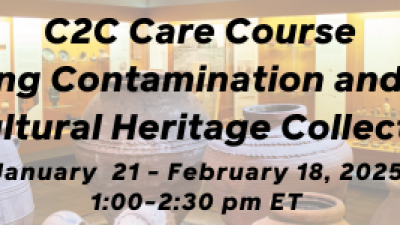


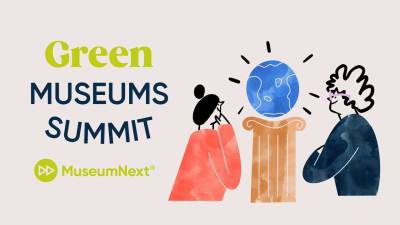
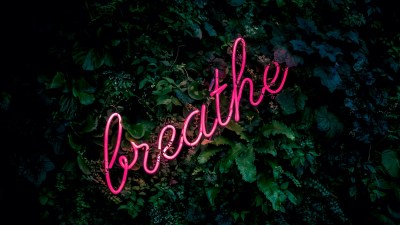

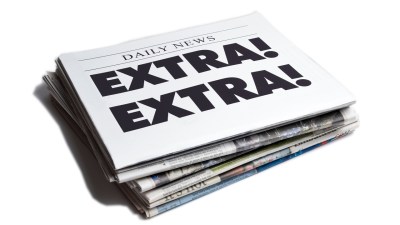
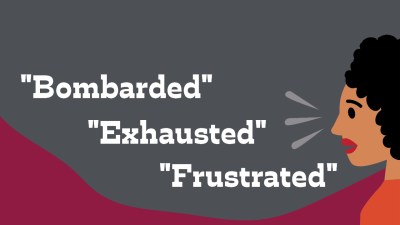
Comments